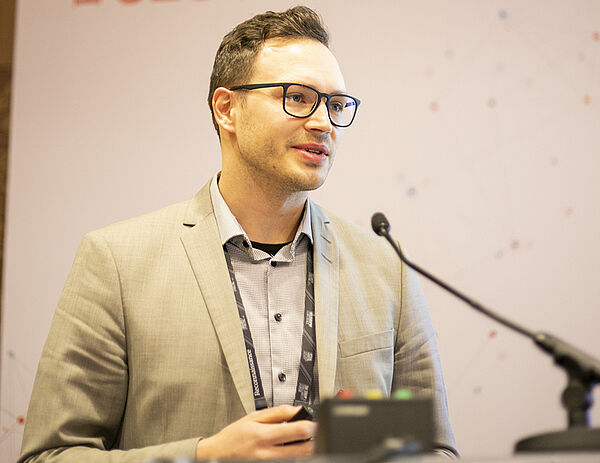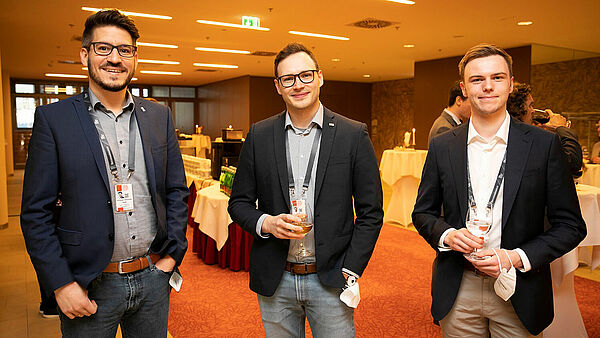At the "Optical & Digital Document Security" (ODDS) conference in Vienna, inIT employees Anton Pfeifer, Julian Bültemeier and Christoph-Alexander Holst presented their latest AI methods for automatically creating security documents. The ODDS is the world's most important and largest scientific conference for physical, digital and virtual document security. InIT scientists of the working group "Discrete Systems" have been researching methods for the automated production and quality assurance of banknotes, intelligent banknotes, and security at ATMs for more than ten years now under the leadership of Institute Director Professor Volker Lohweg.
Banknote portraits and motifs are printed using an intaglio printing process. Intaglio printing gives the motifs their unique feel and appearance. The printing process cannot be reproduced with commercially available printers, which is why intaglio printing is one of the most important security features of banknotes. Traditionally, artwork is manually engraved into copper plates - a process that can take up to three months. Nowadays, special software is available, which reduces the creation time to a few weeks. This process can be automated through the use of AI. "Our previous AI design algorithm still required up to two days to automatically convert a portrait into an intaglio pattern. We were able to reduce this to a few minutes with our current research work," reports research assistant Julian Bültemeier. Speeding up the design process of banknotes not only means reducing economic costs, but also staying one step ahead of counterfeiters.
The potential of artificial intelligence and the relevance of digital technologies for security documents has also been recognised by the scientific community. The ODDS merged the former conferences "Optical Document Security" and "Digital Document Security". In its new form, ODDS for the first time addressed both physical optical document security and digital security concepts for payment transactions and identity authentication. "With our research topics focusing on the use of artificial intelligence in document security, we are exactly at the cutting edge of technology. We are excellently positioned for the future and look forward to participating in the digital transformation," sums up research group leader Christoph-Alexander Holst. The next ODDS is already being planned, which will take place in Paris in 2023. There, the inIT staff will once again have the opportunity to present world firsts in AI-methods for documents security.
Das Potential Künstlicher Intelligenz und die Relevanz digitaler Technologien für Sicherheitsdokumente hat auch die wissenschaftliche Community erkannt. Die ODDS ist eine Zusammenlegung der ehemaligen Konferenzen „Optical Document Security“ und „Digital Document Security“. In der neuen Form adressierte die ODDS erstmals sowohl physische optische Dokumentensicherheit als auch digitale Sicherheitskonzepte für Zahlungsverkehr und Identitätssicherstellung. „Mit unseren Forschungsthemen rund um den Einsatz von Künstlicher Intelligenz in der Dokumentensicherheit treffen wir also genau den Zahn der Zeit. Für die Zukunft sind wir exzellent aufgestellt und freuen uns, am digitalen Wandel mitzuwirken.“, resümiert Forschungsgruppenleiter Christoph-Alexander Holst. Die nächste ODDS ist bereits wieder in Planung, die 2023 in Paris stattfinden wird. Dort haben die inIT-Mitarbeiter dann wieder die Möglichkeit, erneut ihre Weltneuheiten zu präsentieren.



